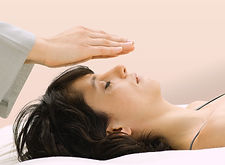


The Vagus Nerve(s) and How to Activate Them
What is the Vagus Nerve and why is it so important?
The Vagus Nerve is the most important part of the parasympathetic nervous system which is one part of the autonomic nervous system (ANS), the other part being the sympathetic nervous system, which we know plays its part in 'flight, fright or fight' responses to stressors. The parasympathetic nervous system on the other hand is the part that allows us to relax and recover from the stresses of the day. When the parasympathetic system is active it allows us to 'rest and digest'. The ANS therefore takes care of all the activities of our body which are beyond our conscious control - breathing, heart rate, digestion, etc.
The Vagus Nerves - there are in fact two, one each side of the body - originate from the brainstem, run through the entire body and are responsible for regulating control of the heart, lungs, muscles of the throat and airway, liver, pancreas, stomach, spleen. gallbladder, kidneys, small intestine and part of the large intestine. How well these nerves function is a strong determinant of our health. Dysfunction of the vagus nerves is closely associated with ill health.
Proper balance between the sympathetic and parasympathetic nervous systems (the two branches of the ANS) is crucial to living life to our full potential. When stress levels are high for a long period (chronic stress), the parasympathetic system loses its ability to function properly. Chronic stress causes our body to produce high levels of inflammation and it is not given the opportunity to recover and rest, which is necessary for maintaining optimum functionality.
Check Your Vagus Nerve Function
-
In front of a mirror open your mouth and say "ahh, ahh, ahh" - the dangly uvula at the back of your throat should go straight up if your vagal tone is good. If it doesn't move much or pulls to one side then there is some dysfunction in your Vagus Nerve on the side it pulls to.
-
Press on your tongue with your toothbrush in the morning to check your gag reflex. If you gag that is a good sign of vagal tone; if you don't then your vagal tone is low.
-
A rumbly tum is also a good sign (clients often produce much rumbling during a therapy treatments or GTT session, which is a good sign that the Vagus Nerve is being activated).
A really accessible book on the location, functions and dysfunctions of the Vagus Nerve is 'How to Activate Your Vagus Nerve' by Dr Navaz Habib, Ulysses Press, 2019. In a great appendix at the back of his book, Dr Habib gives tables of 'Daily', 'Weekly' and 'Monthly' practices for activating the Vagus Nerve. I thought it would be helpful to show these below (I have amended them slightly):
Helpful techniques for every day
-
Gargling - twice daily when you brush your teeth
-
Humming - twice daily deep in your throat. Try using 'om' and hold onto the vibration for as long as you can
-
Cold showers - end your daily shower with one minute of cold water and increase by 30 or 60 seconds each day until your entire shower is taken in cold water (brrr!)
-
Deep breathing - three times a day in a quiet place for five minutes before each meal
-
Sleep on your side each night (right side is best) - put a pillow between your knees to help you stay on your side
-
Gag reflex action - when you brush your teeth in the morning and evening, use the toothbrush to gently touch the right and left sides of your soft palate.
Helpful weekly techniques
-
Listening to soothing music - at home at least twice a week (not in the car). Relax, close your eyes and really listen. Choose something that helps you to feel calm.
-
Meditation/Mindfulness - this increases your ability to cope and makes you more productive. There are many different ways to meditate, so choose one that resonates with you. If you have never done it, start by taking 5-10 minutes 3 times a week just to close your eyes and focus on your breathing. My personal preference is to close my eyes and listen to birdsong and/or the ticking of a clock to help relax me. It depends on what works for you. I use that as the start of my self-healing practice, which I do 2-3 times a week.
-
Yoga/T'ai Chi/Pilates/light exercise - start off doing this twice a week, preferably at set times to form a routine.
-
Social interaction - meet with friends or family at least once or twice a week (this can be online through Zoom or Skype or whatever you like). Laughter is a great healer, so if you can, have a laugh with them, or watch your favourite comedy shows together if you can.
-
Buy healthy food - lots of fresh fruit and vegetables to support your immunity and general health; not too many unhealthy snacks or alcoholic drinks. You can't eat or drink what isn't in your cupboard!
Helpful monthly techniques
-
Body therapy/Healing - once or twice a month have a massage, Reflexology, Acupuncture, Shiatsu or other nurturing therapy to keep you functioning optimally and maybe an Energy Balance Healing, Natural Healing or Reiki session. Try different therapies to see which works for you. There are many more out there - cranio-sacral therapy, kinesiology - all work slightly differently. See which you prefer.
Click the pictures below for information on Reflexology, Angelic Reiki and Energy Balance Healing:



